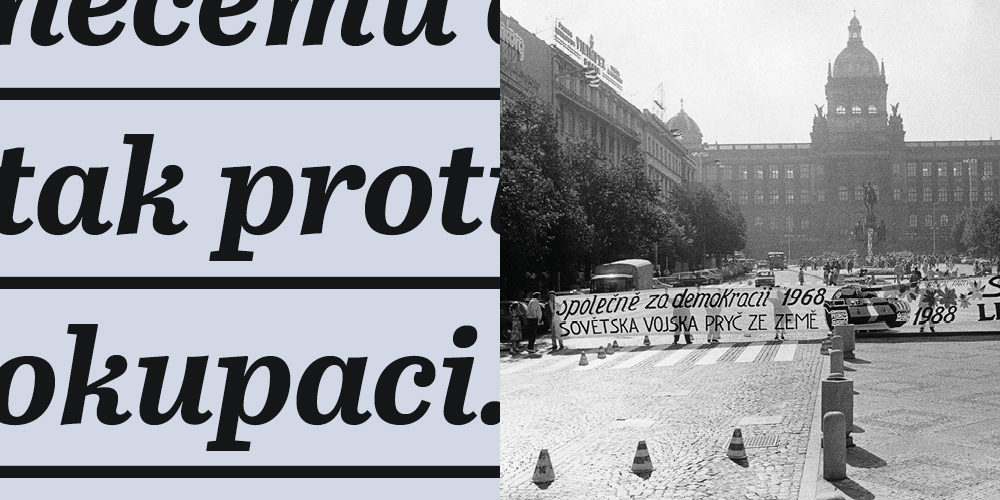
On Sunday, 21 August 1988, Prague experienced something not seen for a long time. Several thousand people gathered in the upper part of Wenceslas Square to protest against the communist regime on the 20th anniversary of the Soviet occupation. Among them was Tomáš Šponar, a twenty-year-old student of the textile and mechanical engineering college.
Soviet soldiers had several garrisons around his native Svitavy. Tomáš says that his parents did not hide the reality of that time.
“We used to see Russian officers buying carpets, shoes, clothes in bulk, which created a certain image of an occupied country, although not at all a violent one.”
On 21 August 1988, he said at home that he was going to see a friend in Prague. From the station he went straight to Wenceslas Square. “I went there spontaneously, on my own. I told myself that if there was something to demonstrate against, it was against the occupation. It was quite a big demonstration, I think the regime was surprised by it.” It was no longer enough for the people to remember twenty years ago, they wanted change. They demanded the release of political prisoners and freedom of speech.
Police officers equipped with truncheons chased demonstrators all over Prague into the night. Many were beaten, around a hundred people were briefly detained, and the authorities launched criminal proceedings against thirteen participants. Tomáš Šponar was lucky to escape arrest. He has a different memory of the demonstration – the American magazine Time published a photograph of the demonstration in which the lens had captured him.
Departure
In the 1980s, communist regimes were collapsing economically and socially. Falling behind the free world could no longer be disguised, and citizens invoked their rights. Rumors of change were coming from the Soviet Union in the era of Mikhail Gorbachev. Our country had been ruled for a second decade by the same set of normalization apparatchiks, who until then had devotedly listened to their comrades from Moscow, but did not want to hear about so-called perestroika – reconstruction.
When the totalitarian regime in our country began to collapse in November and December 1989 under the enormous onslaught of civil unrest, almost 80,000 Soviet soldiers, on whose threat the local regime relied, remained in the barracks – they were ordered not to intervene. In February 1990, the new president, Václav Havel, arrived in Moscow for an official visit. The Soviets apologized for the occupation in August 1968, and the foreign ministers concluded an agreement on the withdrawal of Soviet troops from Czechoslovakia. The negotiations were attended by the MP and musician Michael Kocáb. On 24 June 1991, to celebrate the event, he organized a concert with his band Pražský výběr in Prague’s Sport Hall, with the world-famous rocker Frank Zappa as a guest, and the whole show ended with the symbolic departure of a dummy of a Soviet soldier in a helicopter. Three days later, the real “last Soviet soldier,” Eduard Arkadyevich Vorobyov, the commander of the Central Group, left our country. In total, 73,500 Soviet soldiers, 39,000 of their family members, 1,220 tanks, 2,500 infantry combat vehicles, 105 aircraft, 175 helicopters and 95,000 tons of ammunition left Czechoslovakia.



